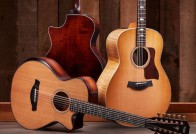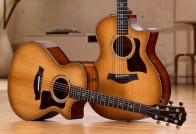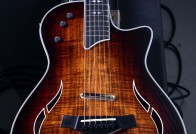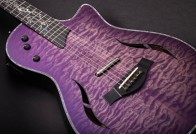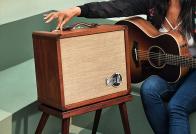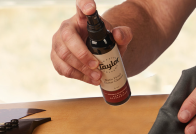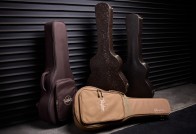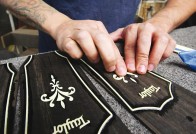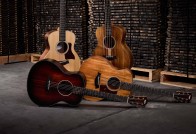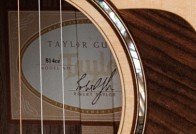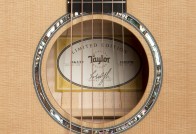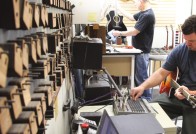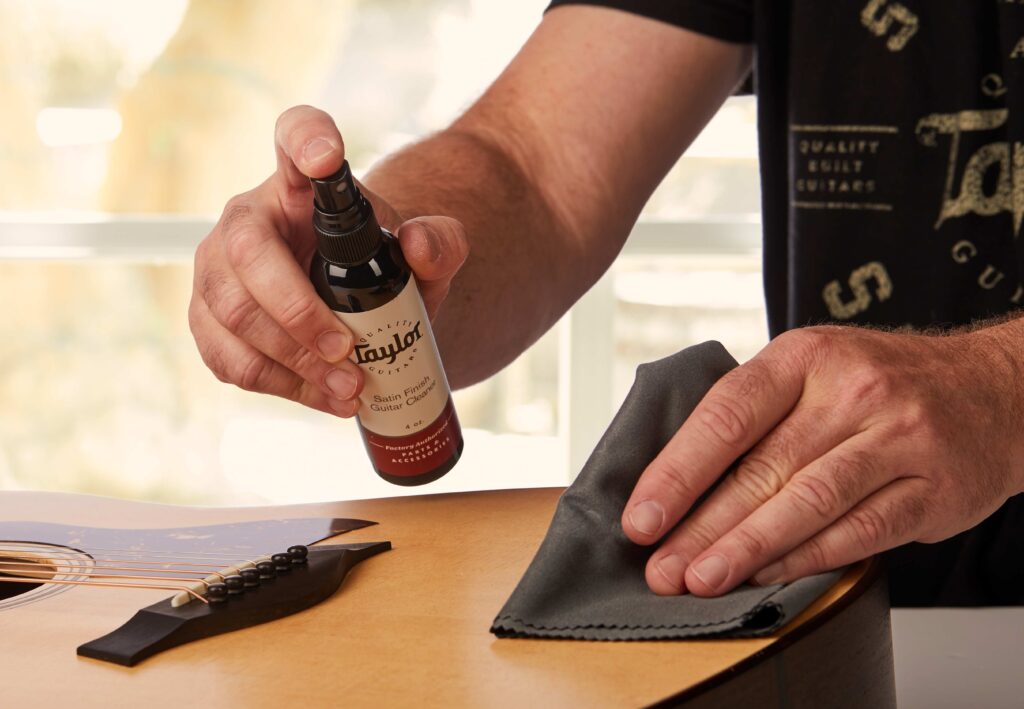Whether you’re always traveling with your acoustic guitars or just playing at home, it’s always a good idea to perform regular maintenance. It’s helpful to know some basic acoustic guitar maintenance techniques that will keep your instrument sounding and feeling great no matter how often you play.
#1: Keep Your Acoustic Guitar Properly Humidified
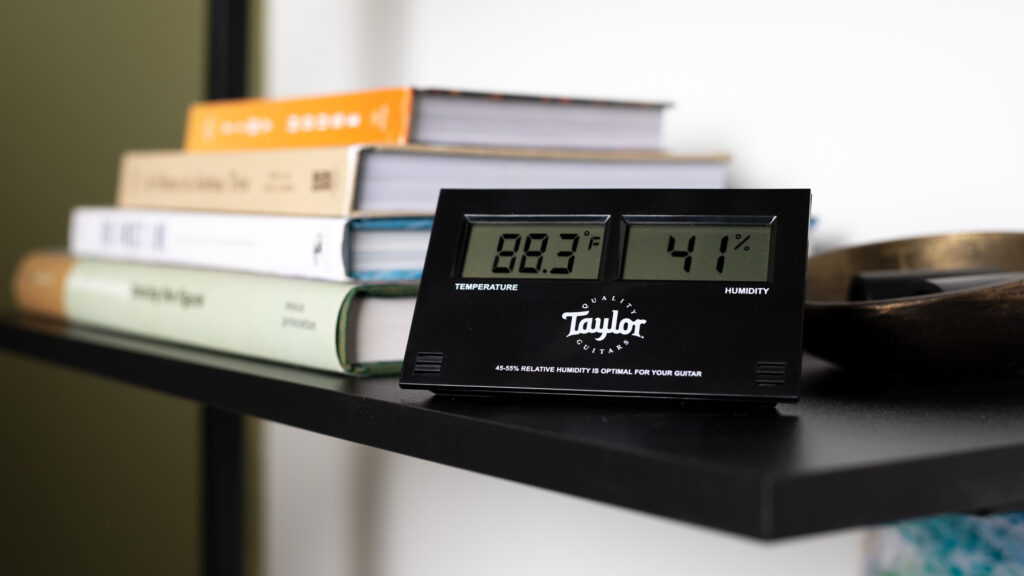
Acoustic guitars are made of wood, and wood is sensitive to changes in climate. Shifts in temperature or relative humidity can affect your guitar in multiple ways, some of which can lead to costly repairs if you’re not careful. Solid woods in particular, such as the solid tops featured on all Taylor acoustic guitars or the back, sides and tops of our U.S.-made instruments, are especially prone to the effects of climate fluctuation. For example, extended exposure to low relative humidity (below 40% RH) can dry out the wood, causing it to shrink and run the risk of cracking. Similarly, excessive humidity can cause the wood to absorb moisture and swell, potentially causing other problems. Without adequate humidity control (especially in drier local climates), acoustic guitars can crack and their necks can warp, causing problems with fretting, intonation and playability.
So how do you prevent this kind of acoustic guitar damage? Easy: by keeping your guitar properly humidified (ideally between 40-60% RH). The easiest way to do this is by storing your guitar in a case with a case humidifier inside. A case humidifier will slowly release moisture inside your case, maintaining humidity to help ensure your guitar doesn’t suffer damage. Using a digital hygrometer can help you monitor humidity levels around your guitar.
#2: Periodically Condition Your Fretboard
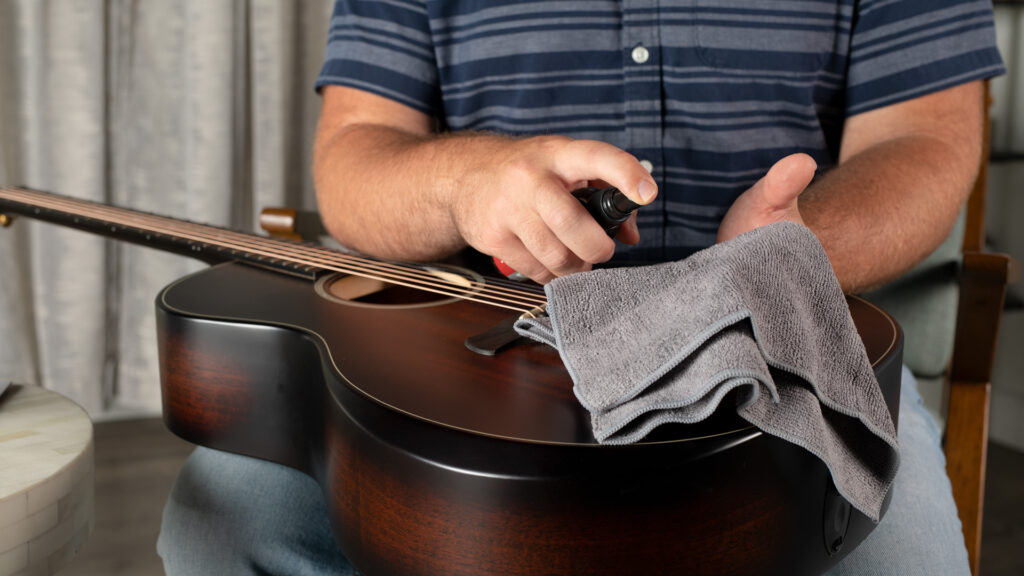
In dry conditions, it’s also possible for your guitar’s fretboard to dry out, which can lead to problems with your guitar’s neck (and makes the fretboard look less lustrous).
To prevent this, we recommend using a basic fretboard conditioner. Conditioning oil keeps your fretboard moisturized and smooth, ensuring a responsive feel while preventing damage.
Conditioning your fretboard is easy. Just apply a small amount of the oil to a soft polish cloth and rub the oil onto your fretboard, making sure you wipe down the edges of each fret (up against both sides of each fret bar, as that’s where residue from playing tends to accumulate most). Give the oil a couple minutes to sink in, then wipe it clear from your fretboard. Of course, you’ll want to take the strings off your guitar first. Which brings us to our next tip…
#3: Change Your Guitar Strings
There’s nothing quite like a fresh set of strings to give your guitar a bit of extra punch.
Steel strings will collect oil, dirt and grime from your fingers over time, and may even begin to rust in humid climates. This can make your strings sound less vibrant the more you play. (Note: Every guitar player is different, and some love the mellow sound that can come from generously played-in strings. No judgment from us.)
So how often should you change your strings? It varies depending on how often you play, your local climate and other factors. If you start to notice that your strings feel dirty or if your guitar is starting to sound a little dull, it might be time to switch out those strings.
If you want to get longer life out of your strings, many brands offer coated strings that feature a thin polymer layer that keeps oils and grime away from your strings, preserving their initial vibrant tone for a longer period. Here’s another simple tip: Wash your hands before you play.
#4: Polish and Clean Your Guitar
Every guitar deserves to shine, and it’s easy to keep yours dirt-, oil- and fingerprint-free.
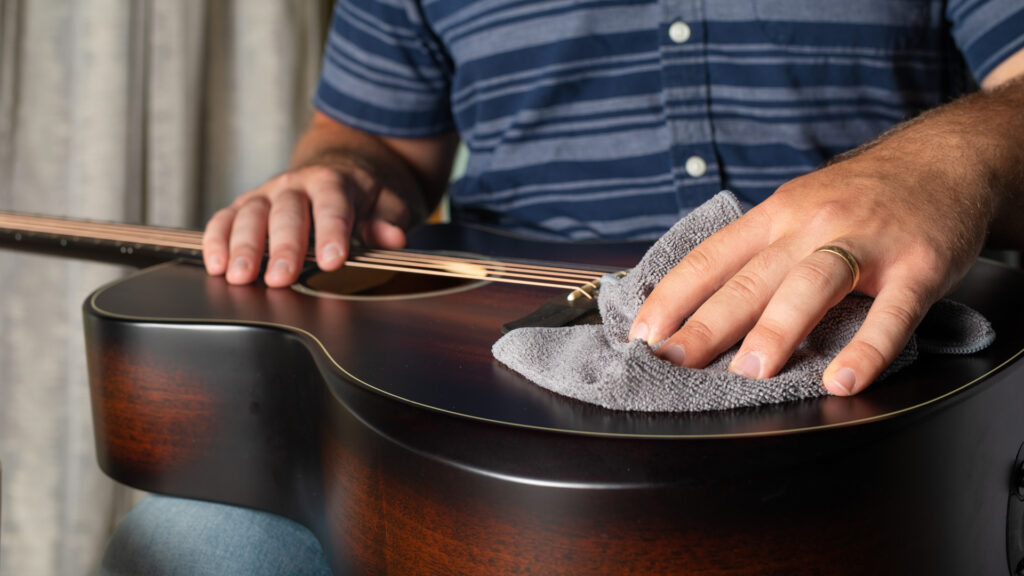
First off, you’ll need a good polish or cleaner solution. Which you should use depends on your guitar’s finish. If your guitar has a matte or satin finish, we strongly recommend using a guitar cleaner formulated for that finish type. If your guitar features a glossy finish, use a guitar polish.
Next, you’ll need a microfiber polish cloth. We specifically recommend microfiber cloths because they’re much softer than standard cloth and are woven with materials that won’t leave marks or scratches. Using a regular cotton cloth or paper towel is likely to damage your guitar’s finish, so avoid these entirely. For satin- or matte-finished guitars, use a suede microfiber cloth. Polish a gloss-finished guitar with a plush microfiber cloth.
Typically it’s best to apply a small amount of cleaner or polish to your microfiber cloth and then wipe down your guitar (instead of applying cleaner or polish directly on the guitar).
#5: Try TaylorSense
If you’re a player who lives in a dry climate or frequently travels with your guitar, it’s helpful to have a way to monitor the conditions around your guitar for any changes that could potentially lead to damage.
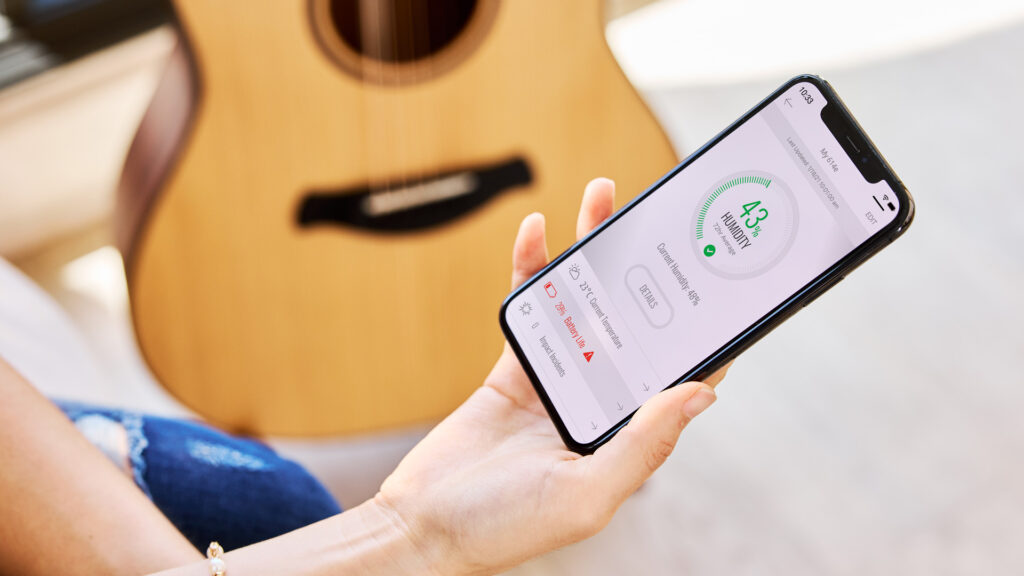
That’s what the TaylorSense guitar health monitoring system is for. It’s a small smart sensor box that installs neatly into the battery compartment of any Taylor acoustic guitar equipped with Expression System 1 or 2, ES-B, or ES-N electronics powered by a 9-volt battery. The unit detects temperature and relative humidity, transmitting that information via Bluetooth to the paired app on your smartphone. This allows you to keep an eye on the factors that can affect your guitar’s playability and will notify you if there are changes that require your attention. The sensor box also detects significant physical impact, and you’ll receive a push notification if TaylorSense detects a bump or blow that could cause damage to your guitar.
The TaylorSense app is available for free for both iOS and Android devices.
Bonus Guitar Care Tip: Play Often!
One of the best ways to keep your guitar in good shape is to make sure you play consistently. Playing often means you’ll know exactly what your guitar needs and when, and it’s always easier to take care of your guitar on a regular basis than to neglect normal maintenance and pay for repairs. That’s why our final recommendation is always this: pick up that guitar and play.





